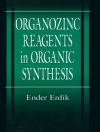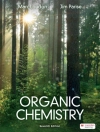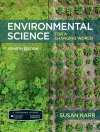Volume 11 of the Handbook of Green Chemistry series identifies, explains and expands on green chemistry and engineering metrics, describing how the two work together, backed by numerous practical applications.
Up-to-date and authoritative, this ready reference covers the development and application of sustainable chemistry along with engineering metrics in both academia and industry, providing the latest information on fundamental aspects of metrics, practical realizations and example case studies. Additionally, it outlines how metrics have been used to facilitate developments in sustainable and green chemistry. The different concepts of and approaches to metrics are applied to fundamental problems in chemistry and the focus is firmly placed on their use to promote the development and implementation of more sustainable and green chemistry and technology in the production of chemicals and related products.
Starting with molecular design, followed by chemical route evaluation, chemical process metrics and product assessment, by the end readers will have a complete set of metrics to choose from as they move a chemical conception to final product.
Of high interest to academics and chemists working in industry.
İçerik tablosu
List of Contributors XI
Preface XIII
1 Green Chemistry Metrics 1
David J.C. Constable
1.1 Introduction and General Considerations 1
1.2 Feedstocks 5
1.3 Chemicals 6
1.3.1 Hazard and Risk 6
1.4 General Chemistry Considerations and Chemistry Metrics 10
1.5 Evolution of Green Chemistry Metrics 11
1.6 Andraos: Tree Analysis 14
1.7 Process Metrics 15
1.8 Product Metrics 16
1.9 Sustainability and Green Chemistry 17
1.10 Making Decisions 18
References 19
2 Expanding Rational Molecular Design beyond Pharma: Metrics to Guide Safer Chemical Design 29
Nicholas D. Anastas, John Leazer, Michael A. Gonzalez, and Stephen C. De Vito
2.1 Introduction to Safer Chemical Design 29
2.2 Life Cycle Thinking 30
2.2.1 Sustainability, Green Chemistry, and Green Engineering 30
2.2.2 Life Cycle Considerations 31
2.2.3 Life Cycle Assessment 32
2.2.4 Chemical Process Sustainability Evaluation – Metrics 34
2.3 Attributes of Chemicals of Good Character 36
2.4 Tools for Characterizing the Attributes of Chemicals of Good
2.4.1 Strive to Reduce or Eliminate the Use of Chemicals 40
2.4.2 Maximize Biological and Use Potency and Efficacy 40
2.4.3 Strive for Economic Efficiency 40
2.4.4 Limited Bioavailability 41
2.4.5 Limited Environmental Mobility 41
2.4.6 Design for Selective Reactivity: Toxicity 41
2.4.7 Minimize the Incorporation of Known Hazardous Functional Groups: Toxicophores and Isosteres 42
2.4.8 Minimize the Use of Toxic Solvents 42
2.4.9 Limited Persistence and Bioaccumulation 43
2.4.10 Quick Transformation to Innocuous Products 44
2.4.11 Avoid Extremes of p H 44
2.5 A Decision Framework 44
2.5.1 A Suggested Protocol for Approaching Safer Chemical Design 45
2.5.2 Alternatives and Chemical Risk Assessment 45
2.6 The Road Ahead: Training of a Twenty-First Century Chemist 46
References 46
3 Key Metrics to Inform Chemical Synthesis Route Design 49
John Andraos and Andrei Hent
3.1 Introduction 49
3.2 Material Efficiency Analysis for Synthesis Plans 50
3.3 Case Study I: Bortezomib 56
3.3.1 Millennium Pharmaceuticals’ Process 59
3.3.2 Pharma-Sintez Process 62
3.3.3 Material Efficiency – Local and Express 64
3.3.4 Synthesis Strategy for Future Optimization 72
3.3.5 Summary 73
3.4 Case Study II: Aspirin 74
3.4.1 Reaction Network 74
3.4.2 Material Efficiency 76
3.4.3 Environmental and Safety–Hazard Impact 78
3.4.4 Input Energy 84
3.4.5 Case I 84
3.4.6 Case II 85
3.4.7 Case III 85
3.4.8 Case IV 85
3.4.9 Case V 86
3.4.10 Case VI 86
3.4.11 Concluding Remarks and Outlook for Improvements 88
References 91
4 Life Cycle Assessment 95
Concepción Jiménez-González
4.1 Introduction 95
4.2 The Evolution of Life Cycle Assessment 96
4.3 LCA Methodology at a Glance 97
4.3.1 Goal and Scope 98
4.3.2 Inventory Analysis 98
4.3.3 Impact Assessment 99
4.3.4 Interpretation 99
4.3.5 LCI/A Limitations 100
4.3.6 Critical Review 101
4.3.7 Streamlined Life Cycle Assessment 102
4.4 Measuring Greenness with LCI/A – Applications 103
4.4.1 Probing Case Studies 103
4.4.2 Chemical Route Comparison 106
4.4.3 Material Assessment 109
4.4.4 Product LCAs 112
4.4.5 Footprinting 115
4.5 Final Remarks 117
References 118
5 Sustainable Design of Batch Processes 125
Tânia Pinto-Varela and Ana Isabel Carvalho
5.1 Introduction 125
5.2 State of the Art 126
5.2.1 Design and Retrofit of Batch Processes 127
5.2.2 Sustainability Assessment 131
5.3 Framework for Design and Retrofitting in Batch Processes 136
5.3.1 Economic Assessment 138
5.3.2 Environmental Assessment 139
5.3.3 Social Assessment 140
5.3.4 Methodologies 141
5.4 Case Studies 142
5.4.1 Retrofit Sustainable Batch Design 142
5.4.2 Design of Batch Process 147
5.5 Conclusions 150
References 152
6 Green Chemistry Metrics and Life Cycle Assessment for Microflow Continuous Processing 157
Lihua Zhang, Qi Wang, and Volker Hessel
6.1 Introduction 157
6.1.1 Green Chemistry and Green Engineering in the Pharmaceutical Industry 157
6.1.2 Green Metrics and Life Cycle Assessment 158
6.1.3 Continuous Processing at Small Scale 159
6.2 Environmental Analysis through Green Chemistry Metrics and Life Cycle Assessment 162
6.2.1 Green Chemistry Metrics 162
6.2.2 Life Cycle Assessment (LCA) 163
6.3 Application of Green Chemistry Metrics and Life Cycle Assessment
to Assess Microflow Processing 163
6.3.1 Use as Benchmarking Tool for Continuous versus Batch; at Lab and Production Scale 164
6.3.2 Use as Decision Support Tool for Single Innovation Drivers – Choice of Type of Microreactor and Type of a Catalyst (Including Use/Not Use) 167
6.3.2.1 Reaction Conditions of Batch Process and Continuous Microflow Process 167
6.3.2.2 SLCA Results 168
6.3.2.3 Economic Evaluation 170
6.3.2.4 Conclusions 171
6.3.3 Use as Decision Support Tool for Single Innovation Drivers – Solvent Choice and Role of Recycling 171
6.3.4 Use as Decision Support Tool for Bundled Innovation Drivers Such as Multifacetted Process Optimization versus Process Intensification 174
6.3.4.1 API Production Process at Sanofi 174
6.3.4.2 Process Alternatives for Optimization and Intensification 174
6.3.4.3 Ecological Profile Comparison of Crude Batch and Continuous Operation 175
6.3.4.4 Cost Analysis of Batch and Continuous Operation 178
6.3.4.5 Conclusions 179
6.3.5 Cascading Reactions Into a Microreactor Flow Network – Greenness of Multistep Reaction/Separation Integration 179
6.3.5.1 LCA Study for Single-Step Analyses in Batch and Flow 181
6.3.5.2 LCA Study for “Two-Reactor Network” Process Designs 184
6.3.5.3 LCA Study for “Three-Reaction Network” Process Designs 184
6.3.6 Use as Process-Design Guidance and Benchmarking Tool Against Conventional Processes 186
6.3.6.1 Process Simulation and CAPEX Cost Study 188
6.3.6.2 LCA for Continuous Flow Synthesis of ADA 190
6.3.6.3 LCA for Two-Step Conventional Synthesis of ADA 191
6.3.6.4 Complete LCA Picture 191
6.3.6.5 Green Metrics Compared for the Direct Microflow Route and Conventional Two-Step Route 192
6.3.6.6 Conclusions 194
6.4 Economic Analysis and Snapshot on Applications with Continuous Microflow Processing 195
6.4.1 Life Cycle Costing (LCC) 195
6.4.2 Snapshot on LCC Applications with Continuous Microflow Processing 196
6.5 Conclusions and Outlook 199
References 201
7 Benchmarking the Sustainability of Biocatalytic Processes 207
John M. Woodley
7.1 Introduction 207
7.2 Biocatalytic Processes 207
7.3 Biocatalytic Process Design and Development 210
7.4 Sustainability of Biocatalytic Processes 210
7.5 Quantitative Measuring of the Sustainability of Biocatalytic Processes 212
7.6 Early Stage Sustainability Assessment 213
7.6.1 Evaluation of Route Feasibility 214
7.6.1.1 Atom Economy 214
7.6.1.2 Carbon Mass Efficiency 214
7.6.2 Evaluation of Biocatalyst and Reaction Development 215
7.6.2.1 Process Mass Intensity 215
7.6.2.2 Solvent Intensity 215
7.6.2.3 Water Intensity 216
7.6.2.4 E-factor 216
7.7 Benchmarking 216
7.7.1 Route Selection 216
7.7.2 Biocatalyst and Reaction Development 217
7.8 Examples 217
7.8.1 Biocatalytic Route to Atorvastatin 218
7.8.2 Biocatalytic Route to Sitagliptin 219
7.9 Future Perspectives 221
7.9.1 Process Development 221
7.9.2 Methodology 223
7.10 Concluding Remarks 224
References 225
8 How Chemical Hazard Assessment in Consumer Products Drives Green Chemistry 231
Lauren Heine and Margaret H. Whittaker
8.1 Introduction 231
8.2 What Drives Consumer Product Companies to Look for Less Hazardous Chemical Ingredients 232
8.2.1 Chemical Substitution and Regrettable Substitution 233
8.2.2 Nonprofit Organization (NPO) Campaigns 235
8.2.3 Retailer Initiatives 237
8.2.4 State Initiatives 240
8.2.5 Consumer Product Sector Leaders: Setting the Example for Others 242
8.3 What is Chemical Hazard Assessment? 243
8.3.1 Globally Harmonized System of Classification and Labelling of Chemicals (GHS) 244
8.3.2 Comprehensive and Abbreviated Forms of CHA 247
8.3.2.1 Green Screen for Safer Chemicals 248
8.3.2.2 Quick Chemical Assessment Tool (QCAT) 252
8.3.2.3 Green Screen List Translator (GS LT) 253
8.4 How Chemical Hazard Assessment is Used 255
8.4.1 Chemical Footprint Project 255
8.4.2 Health Product Declaration Version 2.0 (HPD) 259
8.4.3 Red List – Declare Label 259
8.4.4 United States Environmental Protection Agency: Safer Choice Program 260
8.4.5 International Living Future Institute’s Living Product Challenges 262
8.4.6 Cradle to Cradle Certified Product Program 262
8.4.7 Chemical Alternatives Assessment 263
8.5 Case Studies Showing How CHA Leads to Safer Consumer Products 264
8.5.1 Case Study 1. US EPA Safer Choice Product Certification 264
8.5.2 Case Study 2. Levi Strauss & Co. Screened Chemistry 267
8.5.3 Case Study 3. Development of an Alternative Food Can Liner 269
8.6 Challenges: Beyond Chemical Hazard Assessment 271
8.6.1 Transparency 271
8.6.2 Filling Data Gaps for Existing and Emerging Hazards: Predictive Toxicology and Tox21 272
8.6.3 Integrating CHA into Green Product Design 272
8.7 Conclusion 274
References 275
9 Tying it all together to drive Sustainability in the Chemistry Enterprise 281
David J.C. Constable and Concepción Jiménez-González
9.1 New Areas of Sustainable and Green Chemistry Metrics
Research 286
References 290
Index 291
Yazar hakkında
Paul T. Anastas joined Yale University as Professor and iserves as the Director of the Center for Green Chemistry and Green Engineering at Yale. From 2004-2006, Paul Anastas has been the Director of the Green Chemistry Institute in Washington, D.C. Until June of 2004 he served as Assistant Director for Environment at e White House Office of Science and Technology Policy where his responsibilities included a wide range of environmental science issues including furthering international public-private cooperation in areas of Science for Sustainability such as Green Chemistry. In 1991, he established the industry-government-university partnership Green Chemistry Program, which was expanded to include basic research, and the Presidential Green Chemistry Challenge Awards. He has published and edited several books in the field of Green Chemistry and is one of the inventors of the 12 principles of Green Chemistry.
David J.C. Constable is the Director the American Chemical Society’s Green Chemistry Institute?. From the end of September, 2011 until January, 2013 David worked as the owner and principal at Sustainability Foresights, LLC. David left Lockheed Martin as the Corporate Vice President of Energy, Environment, Safety & Health (ESH) at the end of September 2011. Prior to joining Lockheed Martin, David was the Director of Operational Sustainability in the Corporate Environment, Health, and Safety Department at Glaxo Smith Kline.
During David’s tenure with Glaxo Smith Kline, he held positions of increasing responsibility and global reach within Corporate Environment, Health and Safety. He first joined Smith Kline Beecham, a predecessor to Glaxo Smith Kline, in 1991. Prior to joining Smith Kline Beecham, he served as a Group Leader in the SHEA Analytical Services group of ICI Americas.
Dr. Jimenez-Gonzalez is currently Director of New Product Development at Stiefel, a Glaxo Smith Kline company. She has worked in Glaxo Smith Kline for about 14 years in a variety of roles of increasing responsibility, most recently Director of Engagement, Planning, Analysis and Reporting and Director of Operational Sustainability leading teams responsible for the global programs to embed Sustainability into the operations, the Sustainability external reporting and the Environment, Health and Safety (EHS) strategic plan. Before joining GSK, she was program manager at the Environmental Quality Center of the Monterrey Institute of Technology and Superior Education (ITESM), and worked in several EHS and sustainability positions in Mexico. She currently also teaches Green Chemical Engineering at North Carolina State University (NCSU). In the past she was a faculty member at ITESM and visiting faculty in the Saltillo Institute of Technology, Mexico. She has a B.S. in Chemical and Industrial Eng. from the Chihuahua Institute of Technology (Mexico); a M.Sc. in Environmental Eng. from ITESM, Mexico; and a Ph D in Chemical Engineering from NCSU. Her publications involve topics in the area of life cycle assessment, material selection, green chemistry, energy optimization, much of the publications as a result of Glaxo Smith Klines research.












